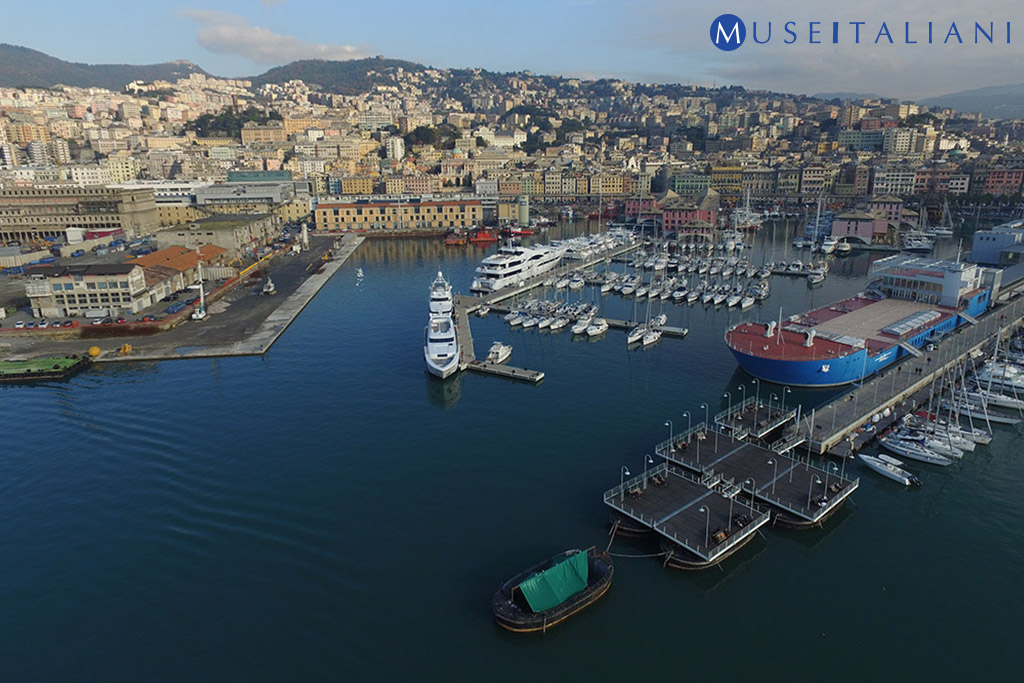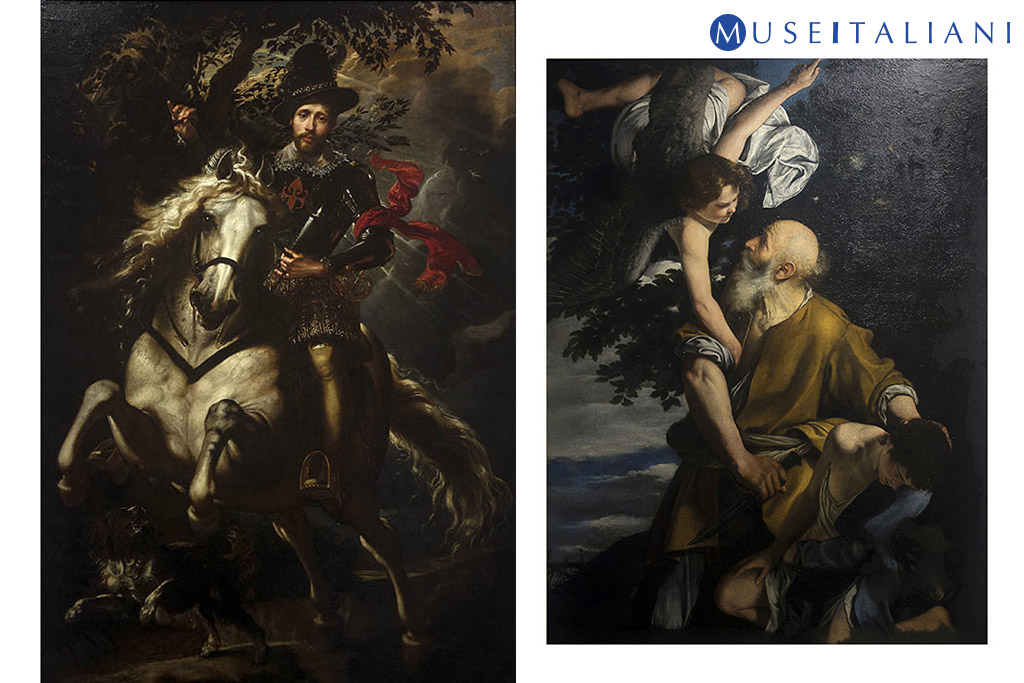Galleria nazionale di Palazzo Spinola
Genova
The museum
Palazzo Spinola is a splendid example of a residence of the Genoese aristocracy between the 17th and 18th centuries. It now houses the Galleria Nazionale, with important masterpieces of modern art.

Genoa, “la Superba” (the Superb), in its historic centre, is a fascinating maze of small squares and narrow alleys: a succession of artistic and architectural treasures of which, in 2006, UNESCO recognised the ensemble of “The Strade Nuove and the system of the Palazzi dei Rolli” as Cultural Heritage of Humanity.
The “Strade Nuove” (known today as via Garibaldi and via Balbi) are an outstanding example of innovation in Renaissance urban planning: an unprecedented layout in which an uninterrupted succession of sumptuous palaces was constructed, belonging to the aristocratic families that rose to the government of the city from 1528 onwards.
The system of the Palazzi dei Rolli
During the golden centuries of the history of the Republic of Genoa, between the 16th and 17th centuries, it was ruled by a Doge and two administrative bodies representing the aristocratic class, the Gran Consiglio and the Minor Consiglio. The Doge held office for two years and resided at Palazzo Ducale where, however, the provision of spaces for receiving prestigious guests such as sovereigns, cardinals, and ambassadors was insufficient.
In 1576 the “Rolli” were established: lists of public accommodations and noble palaces seeking to host personalities visiting the city. Approximately 150 residences were divided up into lottery drums (bussoli) with the names of the owners who, following a public drawing of lots, were required to take on the costs and honours of official visits.

Genoa
Thanks to the extraordinary wealth of the most important families, this organised system of hospitality thus brought into being a network of sumptuous palaces that was so unusual and important that it has been recognised by UNESCO as a World Heritage Site.
Twice a year Genoa celebrates the Rolli Days by opening these noble palaces to the public, free of charge. The next openings in the programme will take place on 14 and 15 October 2017.
Palazzo Spinola di Pellicceria
Palazzo Spinola, once the residence of the Grimaldi family, was included on the Rolli lists and is now one of the 42 palaces listed as UNESCO World Heritage. It still retains its original seventeenth-century decorations and furnishings, particularly at the first floor piano nobile, as clear evidence of the double public and private function of these residences. The choice of objects, such as the display silverware by Matthias Melijn depicting the departure and disembarkation of Columbus, represent the pro-Spanish political orientation of the Grimaldi family.

Galleria nazionale di Palazzo Spinola, Genoa. Matthias Melijn (1589 – 1653), Piatto da parata
The palace was constructed by Francesco Grimaldi in the final years of the 16th century; Pieter Paul Rubens included it in the volume dedicated to the “Palazzi di Genova” (1622). The façade design is valuable as evidence of the original layout of Palazzo Spinola, which was subsequently modified in the centuries that followed.

Palazzi di Genova, di Pieter Paul Rubens – Université de Heidelberg (Ruprecht-Karls-Universität Heidelberg), Pubblico dominio
Maddalena Doria Spinola
The wife of Nicolò Spinola di San Luca, the Marchesa Maddalena Doria, inherited the palace from her brother Paolo Francesco Doria in 1734 and carried out a radical renewal of the decorations, as well as various architectural transformations.
These works lasted for approximately two years between 1734 and 1736 and involved a diverse team of renowned artists and craftsmen. To Maddalena we owe the transformation of the open colonnade into the evocative Galleria degli Specchi, a masterpiece by Lorenzo De Ferrari.

Galleria nazionale di Palazzo Spinola, Genoa. Galleria degli specchi, second floor piano nobile.
The Marchesa commissioned Giovanni Battista Natali to carry out a remarkable modernisation of the fresco in the Salone by Lazzaro Tavarone; Sebastiano Galeotti to create new frescoed framings for the reorganised collection of paintings; and Filippo Mongiardino for the furnishings, rich with gilded inlays. She also ordered sophisticated doors, windows, and mirrors from London, Paris, and Venice.

Galleria nazionale di Palazzo Spinola, Genoa. Salone, second floor piano nobile.
This transformation of the palace made it a fashionable residence that accorded with the most up-to-date European taste of the eighteenth century and can still be admired today in the rooms at the second floor piano nobile.
Maddalena kept a note of all the costs of the refurbishment. Thanks to her ledger of the accounts, which is kept in the archives of the palace, we know when each of the works was carried out, by whom, and the materials that were used. The archives are rich in documents about the successive owners, from Ansaldo Pallavicino to the marquises Paolo and Franco Spinola, who donated it to the Italian State in 1958 along with the furniture, books, and paintings that today make up the nucleus of the collection of the Galleria.
The masterpieces of the Galleria nazionale
The Spinola Donation includes important works of art associated with commissions made by the various owners who later inherited the palace.

Galleria nazionale di Palazzo Spinola, Genoa. From Left: Antonello da Messina, Ecce Homo, 1474 circa; Anton van Dyck, Ritratto di Ansaldo Pallavicino, 1625 circa.
The Galleria hosts masterpieces of outstanding value by such artists as Antonello da Messina, Antoon van Dyck, Pieter Paul Rubens, Orazio Gentileschi, Baciccio, Tintoretto, and Guido Reni.

Galleria nazionale di Palazzo Spinola, Genoa. From left: Pieter Paul Rubens, Ritratto di Giovanni Carlo Doria a cavallo, 1606; Orazio Gentileschi, Il sacrificio di Isacco, 1615.
These are on display alongside other works that the Ministry of Cultural Heritage and Activities acquires to make the collection complete, and which are chosen based on their close connection with the artistic culture and art collecting in the Genoese ambit.
Among the most recent acquisitions are the outstanding cycle of 7 large canvasses on mythological themes by Gregorio De Ferrari (1647 – 1727), the father of Lorenzo, who made the frescoes and decorations in the Galleria degli Specchi. Thus in the halls of the palace these two artists relive a generational confrontation that reveals different characters: on the one hand the “genius and unruliness” of the father and on the other, his son’s more controlled and elegant style.
Address
piazza Pellicceria, 1
16126 Genova
Timetables
Tuesday-Saturday 8.30-19.30; Sundays and Holidays 13.30-19.30
Situazione Emergenziale Aperture :
Aperture Attive
Information
www.palazzospinola.beniculturali.it/
palazzospinola@beniculturali.it
Ph: +39 010 2705300
Closure: Monday
Full: 6,00 €
Reduced: 2,00 €